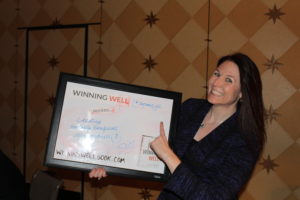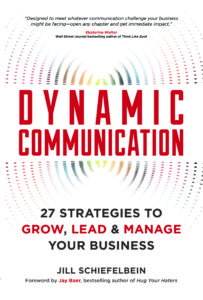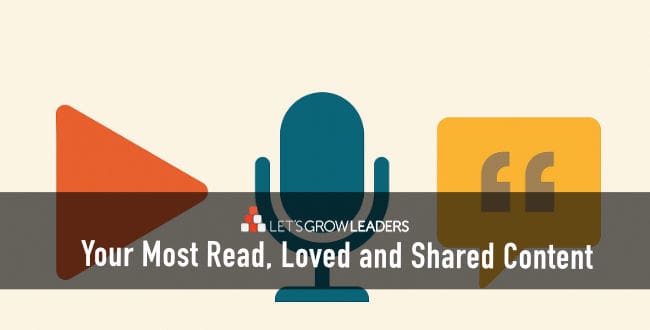 Winning Well Connection
Winning Well Connection
We first met Jill in person at the National Speaker’s Association conference in Washington, DC a few years ago, and she’s become a wonderful friend as well as a deeply respected colleague. She’s been an avid Winning Well supporter from the beginning. Jill’s new book is a must-read if you’re an entrepreneur or aspiring to be one.
In today’s digital world, there’s no such thing as business hours. A business can never truly be “closed” anymore. That’s not to say that your physical office space doesn’t shut down. But it is to say that your customers, and your potential customers, expect access to you 24/7. Whether that access comes in the form of information on your website, engagement and interaction on and with your social media channels, or leaving a review on a third-party site, your business is always “open.” You can never stop paying attention.
Yet many digital marketers stop communicating once their marketing is successful and a purchase is made. They effectively close up shop.
After making a purchase, customers are more likely to engage with you. In fact, 69% of a customer’s first-year spending with you will occur in the 30 days post purchase. If you’re not taking this opportunity to extend your marketing, you’re missing a potential gold mine.
Taking control of your client onboarding process and providing multiple communication touch points and proactive offers of support is a digital marketing strategy that will keep your customers engaged with your product and your brand. Here are several post-purchase emails you can send to communicate with and educate your new customer in a way that leads to further engagement.
Post-Purchase Emails
The Welcome Email
Welcome to the XYZ family/community, and thank you for trusting us with your XYZ needs.
A “thank you” email tends to signify the end of a relationship, not the beginning. Instead, reframe your first email to your consumer welcoming them to your family/community (or whatever word best exemplifies your brand).
In this email you should provide direct contact information—details that will allow them to reach a real human as soon as possible—and any support information that the customer may find useful.
As you start to use the product, we’re always here to help. There’s also a robust online community of support documents and forums accessible to you 24/7.
Make sure in this email that you also take the opportunity re-emphasize the benefits and outcomes the customer will achieve by using your service.
The Check-In and Knowledge-Drop Email
Within the first 72 hours a customer has your product or service at their disposal, reach out. (This assumes that if it’s a product that’s being shipped that you are providing status updates for the consumer along the way.)
In this email, ask for engagement and provide value. Ask your customer to share what they’ve found most useful, helpful, fun, exciting, about your service. Then, drop some knowledge.
Share a piece of short, educational content that informs your customer of a feature of a product or an added-value in the service.
Many XYZ users find that the ____ feature is a major time-saver. Have you used it yet? If not, check out this video to see how it can make your experience even better.
The Providing Context and Action Steps Email
Gather case studies from your consumers and categorize them in a way that makes sense for your business (industry, business size, family size, etc.). Then, provide these contextual examples to your customers.
One place where many companies fall short is providing case studies, but not providing action steps. Gather success stories but be sure to break them down into manageable and executable action steps for your customers to follow. Specificity is important.
We thought you might like to see how Rosemary, a fellow hospitality business owner, uses XYZ to help mange her social media engagement.
Then provide the situation and context, the process, and the result. At the end, include the step-by-step actions your customer can take to achieve a similar outcome. This is also a good opportunity to note upgraded features that could further extend the success through a continued narrative.
To implement this plan for your business … (insert action steps).
And if you’re curious, Rosemary just started to test out the XYZ feature and we’ll keep you posted on her results! (Of course, taking the chance to link to the upgraded feature.)
The Customization Email
If your service or product can be customized, personalized, or upgraded, this is a prime email to use. Maybe you offer a free training. Perhaps you offer a user community. Propose scheduling a one-on-one personalization session. And make it easy for your customer to access these resources.
We want to make sure you’re getting the most out of your XYZ experience. If you’d like to chat with one of our product customization experts to make sure you’re getting the most out of your purchase, schedule a 30-minute session.
Then, of course, link to an easy online scheduling tool. And ensure that, when your customer schedules, she is able to input specific questions that she has to help guide the conversation.
Remember, once your marketing is successful you still have a lot of work to do. Think of the post-purchase email marketing opportunities as ways to educate your customer. When people have questions, they want answers. Be the brand that answers their questions, and you’ll make an impression. Be the brand that anticipates questions, and you’ll make an impact.
Note: This article contains excerpts from Dynamic Communication: 27 Strategies to Grow, Lead, and Manage Your Business (Entrepreneur Press, March 2017).
Winning Well Reflection
Jill has given us a fantastic blueprint to building our relationships with customers. We particularly enjoyed the notion that a purchase is not the end of the relationship, but just the beginning. We invite you to view your relationship with your team members the same way: when you hire someone, it is the beginning of the relationship. How do you put people before projects, invest, connect, and collaborate from there?








0 Comments